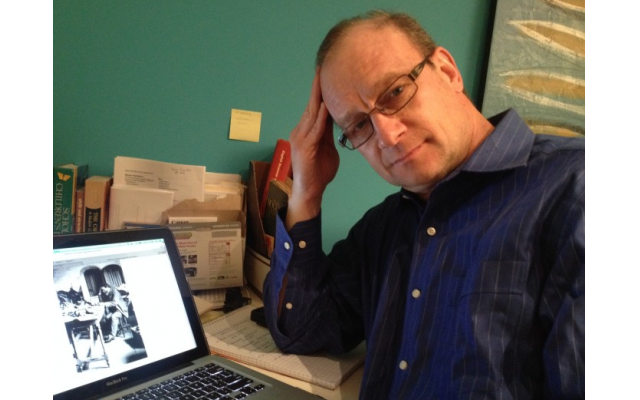Looking for Light to Dispel the Darkness
Looking back over the year, Dave seeks examples of people who found sparks of light in otherwise dark circumstances.
Dave Schechter is a veteran journalist whose career includes writing and producing reports from Israel and elsewhere in the Middle East.
Since receiving a cancer diagnosis (I’m feeling fine, thanks) the past several months have provided opportunities to consider the struggle between light and dark.
Mustering the effort to seek out light in such circumstances can be a challenge, even for those who tend to see the proverbial glass half-full. For the rest of us, greater effort is required.
When I wrote an article last year about interpretations of the phrase tikkun olam, Rabbi Ari Sollish of Chabad Intown explained the role of light in repairing the world.
“Before this world, before this reality, G-d created another reality. And in that reality the light was too great for the vessels. The vessels shattered and the shards, the broken pieces of those vessels, formed the physical reality of this world. … The other world had a lot of light and the vessels were small. This world has big vessels and a small amount of light,” Sollish said. “These sparks are found in earthly things and physical reality and our job, the job of every human being, of every soul, is to seek out sparks and to elevate them back to the source, to G-d.”
In my articles and columns from the past year I found examples of people collecting those sparks.
Norbert Friedman died Feb. 6 at age 96. “There was something uplifting about spending time with this man, who survived 11 Nazi concentration camps, who surely had earned the right to view life in dark terms – yet radiated light,” I wrote in an appreciation article published a week later in the AJT.
At his birthday party last December, Friedman was asked, “How do you do it?”
“Many of you have forced me to change my thinking about life. For this I’m grateful. I will go wherever they take me, happy that I have known and I have benefited from the love and friendships from such wonderful people as you,” he said.
In March, I wrote, “At the root of their barbarism, the Nazis sought to strip Jews of their dignity,” at the start of a story about the efforts of John and Amy Israel Pregulman to restore a measure of dignity to Holocaust survivors.
Using a small camera and eschewing artificial lights or backdrops, in the past seven years John has photographed some 1,065 survivors, most, but not all, in the United States. The photographs are taken not for profit, nor for gallery shows, but are given to the survivors themselves.
The Pregulmans learned that perhaps 30,000 of an estimated 80,000 survivors in the United States live below the government-established poverty line. “We found that unconscionable,” Amy said. “In relationship to need, it’s such a massive problem. There is more need than there are dollars, right now.”
In November 2015, the Pregulmans established KAVOD – Ensuring Dignity for Holocaust Survivors (kavod, the Hebrew word for dignity). Every dollar donated helps purchase grocery and pharmacy gift cards that are funneled to survivors in need through local Jewish organizations. Thus far, KAVOD has assisted more than 2,100 survivors.
“My feeling is, that’s a Jewish perspective. You’re taught to take care of each other,” Amy said. “We’re responsible for each other as Jews. We’re responsible for each other as people.”
Now, funding from the Seed the Dream Foundation will allow KAVOD to also aid survivors needing dental and vision care, as well as assistance with utilities, home repairs and rent.
Remembering the light of the lives lost, rather than the darkness of their deaths, is at the heart of the AIDS Memorial Quilt. Each of 105,000 names stitched into more than 50,000 panels – cut to measure 3-foot-by-6 foot, the size of a grave – might be considered a memorial candle of a sort.
I wrote in November about Jewish aspects of the quilt, while reporting that after 18 years in Atlanta it would return to San Francisco, where it was created in 1987. “We were founded to remember their names, to make sure that the world did not forget these people, that they did not die in vain,” said Julie Rhoad, president and CEO of the NAMES Project since 2001.
There is a teaching attributed to Rabbi Schneur Zalman of Liadi, the founder of Chabad: “A little bit of light dispels a lot of darkness.”
Or, to put it another way, when I walk outside these days and it’s gray, raining, windy and cold, I remind myself . . . It’s still a nice day.




comments